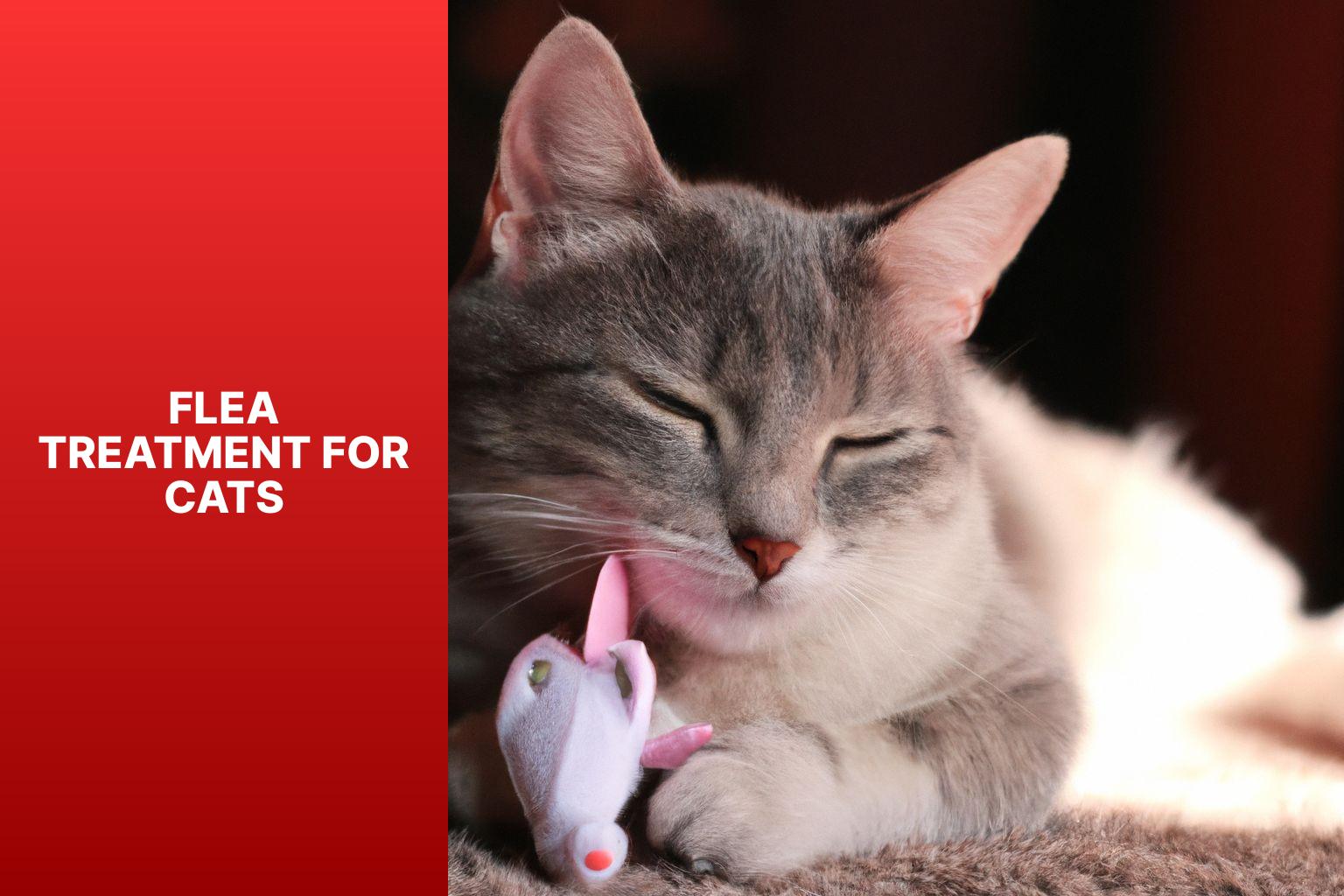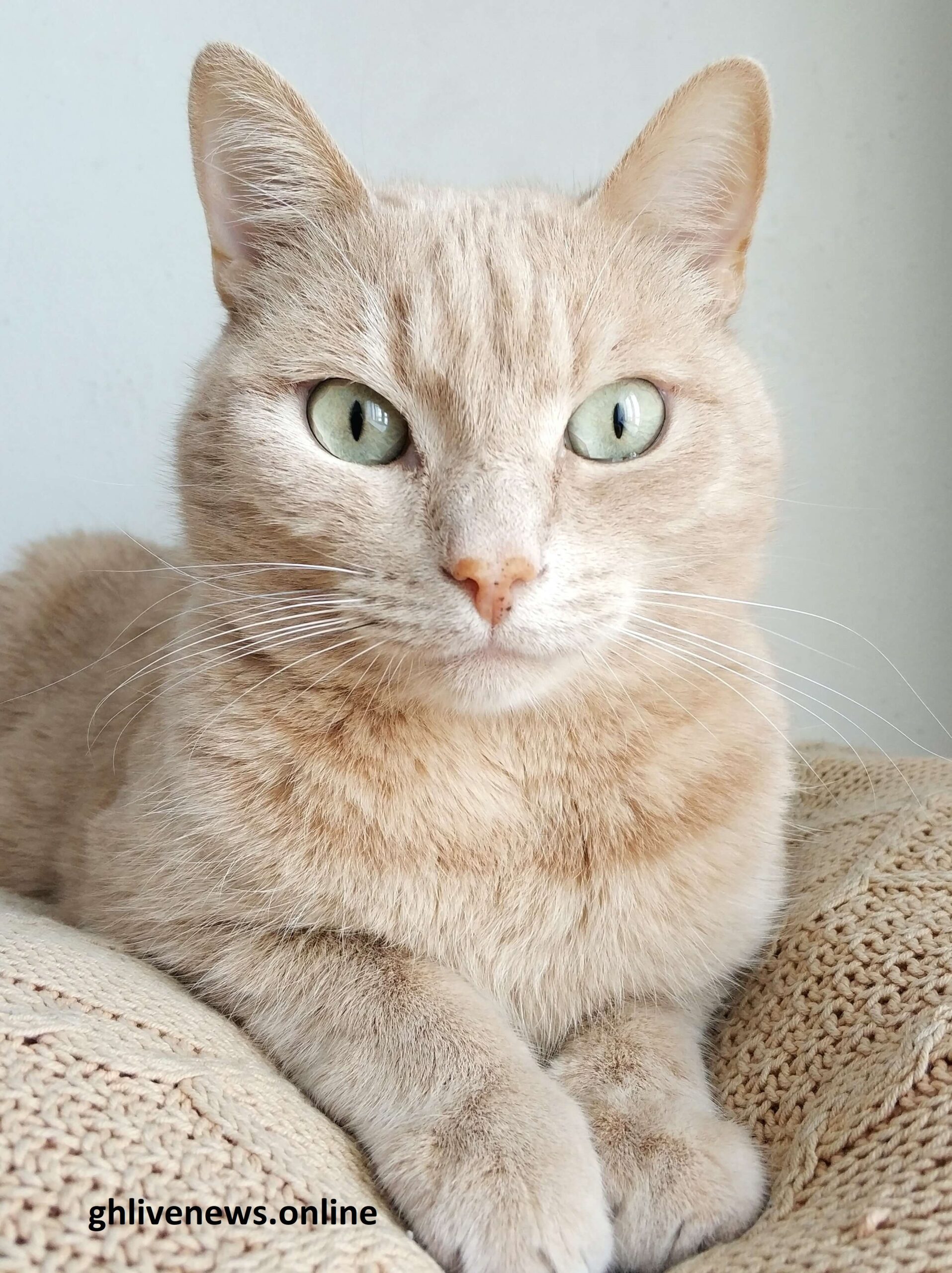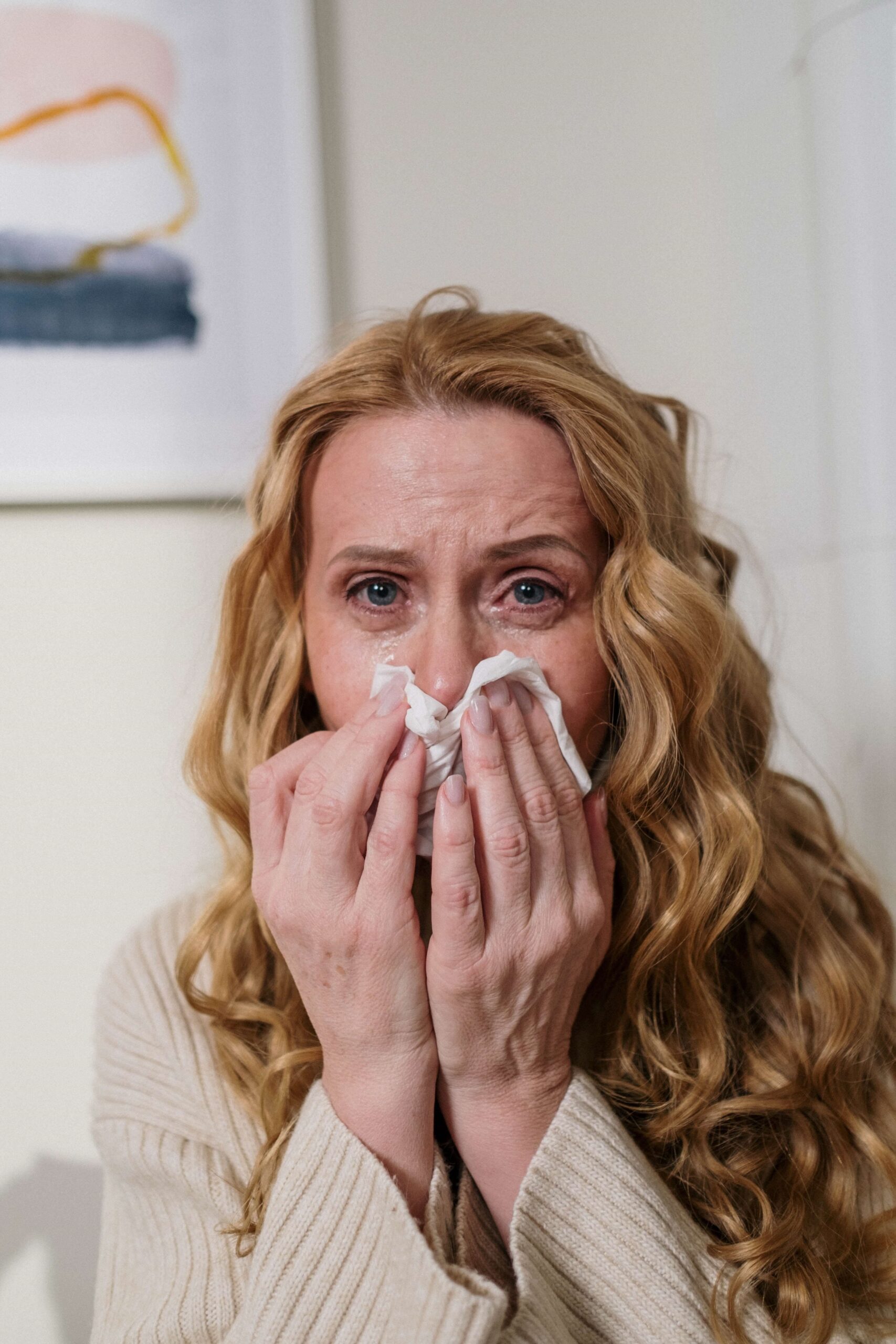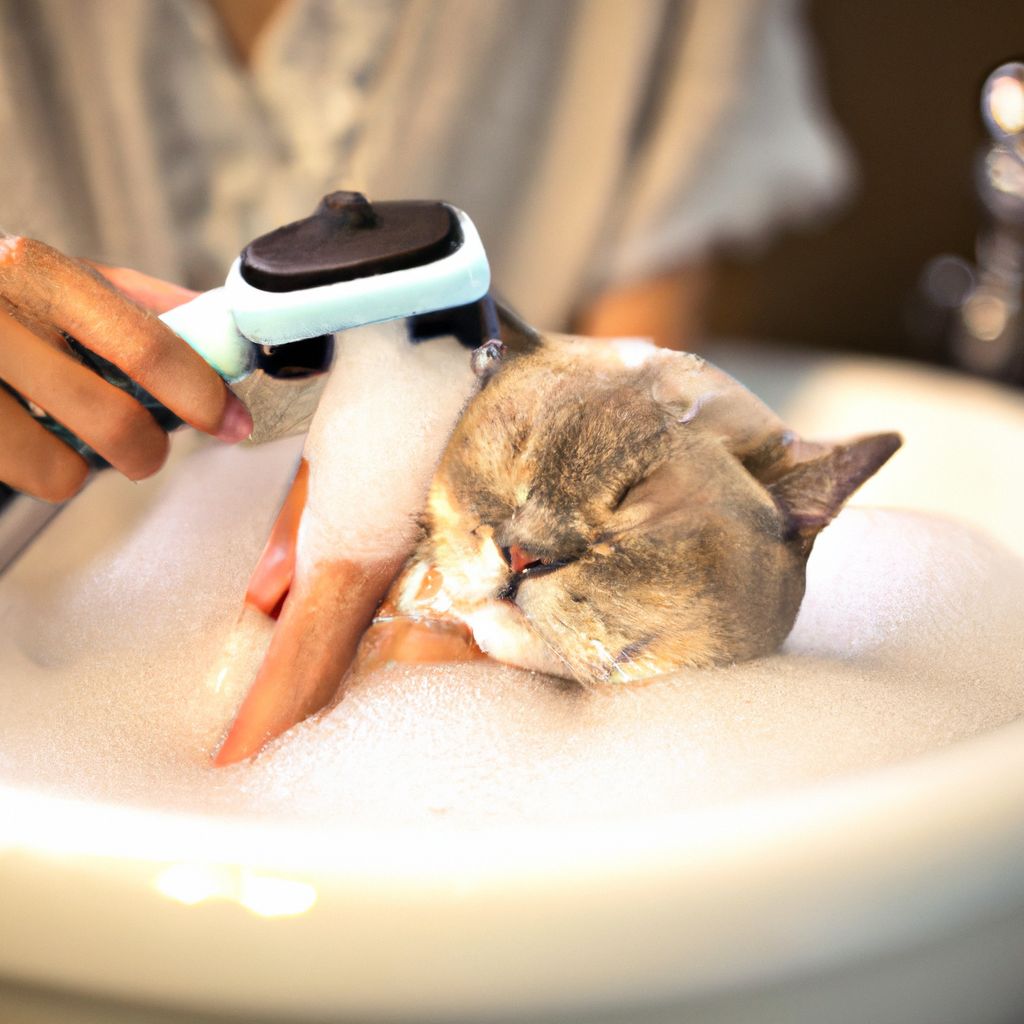.jpg)
Fleas on cats can be a pesky problem for pet owners. These tiny bugs can multiply quickly and cause discomfort to our furry pals. But, there are treatments that can effectively get rid of these pests.
Prevention is key when it comes to flea treatment for cats. Using oral or topical treatments specifically designed for felines can help keep away these insects. These remedies usually contain ingredients that kill adult fleas and disrupt the development of flea eggs and larvae.
In addition, it’s important to treat both the cat and its environment. Vacuuming, washing bedding in hot water, and using specialized sprays or foggers can help eliminate any fleas in the home. Make sure to follow the product instructions and talk to a vet about the best treatment option.
Pro Tip: Consistency is essential when it comes to flea treatment for cats. Set up a routine for preventive treatments and pay close attention to your cat’s behavior and any signs of flea infestation.
Understanding the Importance of Flea Treatment for Cats
Flea treatment for cats is key to their health and well-being. These bugs don’t just cause distress. They can pass on diseases too! It’s vital to know the importance of flea treatment to keep your kitty pest-free.
By using flea treatment regularly, you can stop any infestations and disease spread. Fleas reproduce rapidly, so it’s essential to act early. Treating your cat gets rid of existing fleas and stops future ones. This saves your cat from loads of itching and discomfort.
Also, flea saliva contains substances that can cause allergies in sensitive cats. Allergies can result in excessive scratching, hair loss, and skin infections. With regular flea treatment, your cat can stay healthy and have a smooth coat.
In ancient Egypt, herbs like rue, wormwood, and cedar wood were used to keep fleas away from pets. While these methods may have worked, modern science has created more successful and safe treatments.
Different Types of Flea Treatment Options
For flea treatment on cats, there are three choices: oral meds, spot-on treatments, and flea collars.
Oral Meds: Tablets or pills ingested by the cat. They release chemicals into the cat’s blood, killing fleas when they bite.
Spot-on Treatments: Liquid applied directly on the cat’s skin, usually between their shoulder blades. The medication spreads through the skin and hair to kill fleas.
Flea Collars: Contain chemicals that repel and kill fleas. Worn around the cat’s neck and provide continuous protection for several months.
It’s also important to regularly groom your cat with a flea comb and wash their bedding.
A study in Veterinary Parasitology says oral meds are very effective in killing fleas on cats.
How to Choose the Right Flea Treatment for Your Cat
Selecting the perfect flea treatment for your kitty is essential to keep it healthy and happy. Here’s a guide to help you out:
- Evaluate Your Cat’s Needs: Think about your cat’s age, weight, and any existing medical conditions before deciding on a flea treatment. Ask your vet for advice.
- Look Into Different Products: Search for flea treatments that target both adult fleas and their eggs. Consider application method, duration of effectiveness, and potential side effects.
- Read Reviews & Feedback: Spend some time reading reviews from other cat owners who have used the products you are considering. Their experiences can give you valuable information on product efficiency & safety.
- Check Safety Precautions: Ensure the selected flea treatment is safe for cats by reading any warnings or precautions on the packaging. Don’t use products made for dogs, as they may contain ingredients bad for cats.
- Speak to Your Vet: Before starting any new flea treatment, chat with your vet to make sure it’s good for your cat’s specific needs and overall health.
Furthermore, it’s important to observe your cat after applying the chosen flea treatment. Keep an eye out for any bad reactions or weird behaviors and quickly tell your vet.
Pro Tip: Regular grooming, like brushing and combing, can reduce fleas and give you a chance to detect signs of infestation early.
Step-by-Step Guide on Applying Topical Flea Treatment
Flea protection for cats is essential. To make it simpler, here’s a simple guide:
- Prepare the area: Find a peaceful, comfortable spot with access to the cat’s neck. Have all supplies close.
- Part the fur: Gently part the fur on the back of the cat’s neck. This is the ideal spot to apply the flea treatment.
- Apply: Use the applicator tube and carefully squeeze out the correct dose onto the cat’s skin. Avoid eyes and mouth.
- Massage it in: Use your fingers to rub it in evenly for maximum effectiveness.
- Keep calm: Speak softly and offer toys/treats to distract the cat.
- Check reactions: Monitor for signs of irritation or allergy. If something unusual, talk to the vet.
Remember to read the instructions on the package. PetMD, a reliable pet health source, recommends these steps.
Caring for cats includes protecting them from fleas.
Tips for a Successful Flea Treatment
Flea-infestations in cats can be a real bummer, but with the right moves, you can get rid of them! Here are some top tips to make the process smooth and successful.
- Grooming is key! Brush your cat’s fur to get rid of adult fleas and expose any eggs or larvae.
- Talk to a vet. They know the best treatment option for your cat according to their age, weight, and health condition.
- Clean your home. Vacuum carpets, upholstery, and bedding to get rid of any stray fleas or eggs.
Plus, don’t forget that one female flea can lay up to 50 eggs per day! That’s mind-blowing, right? ASPCA pet care experts remind us to act fast and take preventative measures to get rid of fleas in cats.
Now you are ready to tackle flea infestations and give your furry friend some relief!
Conclusion
Choosing the right flea treatment product for cats is a must. Vet advice and label reading is key for safety and effectiveness. Prevention is better than cure!
Treatments vary in terms of duration of effectiveness. Some may last a few weeks, others for months. Choose one that suits your cat’s lifestyle.
Be sure to stick to recommended dosage and application instructions. Overdosing or using products for other animals can be harmful. Speak to a vet first.
Flea infestations are not only a discomfort, but a health risk. They can transmit diseases and cause allergic reactions. Keeping a flea-free environment is important for well-being.
Mary’s story emphasizes this. She neglected regular flea prevention and her cat suffered severe skin irritation due to a flea infestation. She had to take her cat to the vet for days of treatment. Mary learnt the importance of timely and effective flea treatment for cats.
Frequently Asked Questions
1. How often should I treat my cat for fleas?
It is recommended to treat your cat for fleas every month. This helps to ensure continuous protection against fleas and prevents infestations.
2. What flea treatment options are available for cats?
There are several flea treatment options available for cats, including topical treatments, oral medications, and flea collars. It is important to consult with your veterinarian to determine the most suitable option for your cat.
3. Can I use a flea treatment designed for dogs on my cat?
No, flea treatments specifically designed for dogs should not be used on cats. Some ingredients in dog products can be toxic to cats and may cause serious health issues. Always use flea treatments that are specifically formulated for cats.
4. How long does it take for a flea treatment to work on my cat?
The effectiveness and speed of flea treatments can vary. While some treatments start to work within a few hours, others may take a few days. It is important to follow the instructions provided with the specific product you are using.
5. Are there any potential side effects of flea treatments for cats?
Like any medication, there can be potential side effects with flea treatments for cats. Common side effects may include skin redness or irritation at the application site. It is important to monitor your cat after applying the treatment and consult with your veterinarian if you notice any unusual symptoms.
6. How can I prevent fleas from infesting my home?
To prevent fleas from infesting your home, it is important to use regular flea treatments for your cat. Additionally, maintaining a clean living environment by regularly vacuuming, washing bedding, and treating outdoor areas can help prevent flea infestations.
Originally posted 2023-07-28 23:23:46.






